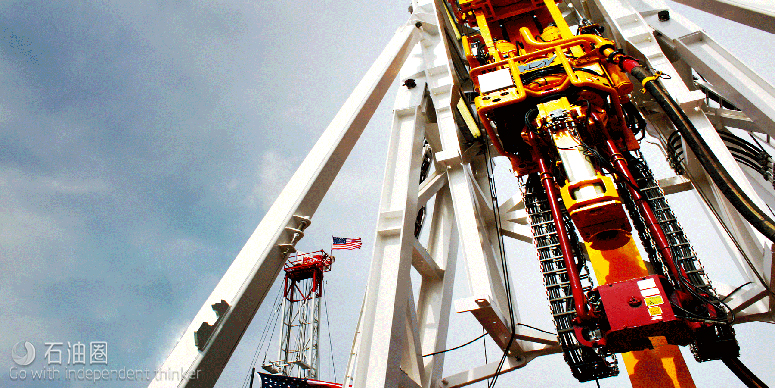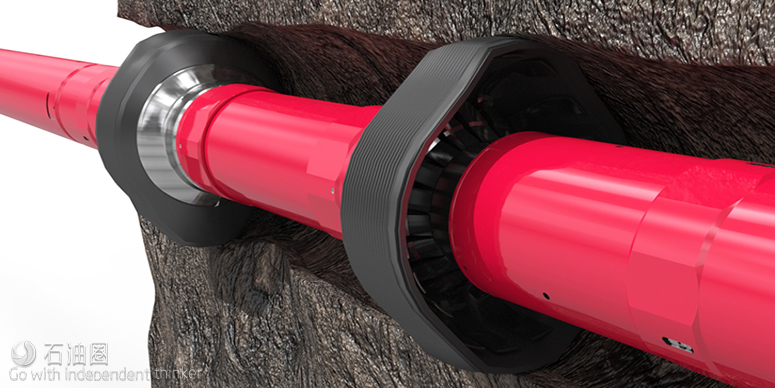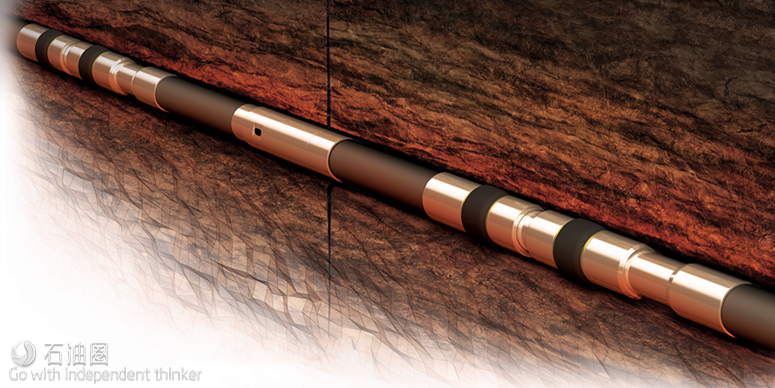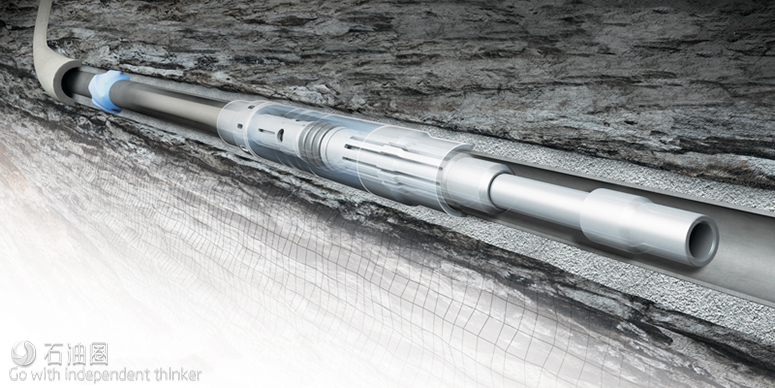A Permanent Solution
In 2005, TAM was among the first to introduce swellable packers, commonly used for unconventional, multistage hydraulic fracturing. Swellable packers provide a low-cost solution for ensuring long-term cement integrity to mitigate potential contamination of aquifers, which typically results from well construction problems, not hydraulic fracturing operations, he explained. The packers provide secondary prevention by reacting to migrating well fluids later in the life of the well if problems occur with the primary cement in the wellbore.
Typically deployed on the casing string, swellable packers expand over a period of days, as specially engineered elastomer compounds absorb the fluid in the wellbore. “Swellable packers are highly sensitive to the well environment, and extensive testing is required to accurately predict the packer’s performance in a given wellbore environment and well geometry,” MrFrisby said. “Our water-swell and oil-swell elastomers are designed to handle everything from challenging low-temperature, high-salinity environments to extreme geothermal applications.”
TAM’s nine compounds for extreme conditions, both hot and cold, include a compound rated up to 575°F and the FastSwell elastomer, suited for low-temperature environments prone to slow swell times. These include Russia, West Texas and deepwater environments near the mud line. “If we know the well conditions, we can provide very accurate predictions of how a swellable packer will perform in that specific environment,” MrFrisby added. “Many applications are standard, but when we need accurate prediction in an uncertain environment, the vast amount of testing we have performed on our elastomers enables us to provide the right packer for the application.”
As the industry moves into more open-hole style well development, especially in the offshore sector where sand control is a frequent issue, packers that can provide zonal compartmentalization with reliable sealing have become essential in reducing cost and improving reliability. “A conventional packer that works fine in a cased hole that is round and even won’t work well in an open hole that is rough, uneven and over-gauged,” explained Randy Simonds, Director of Sand Control for Weatherford. “Swell packers were designed to address that limitation, but they take several days to swell. In today’s cost-conscious environment, operators want an immediate answer to their zonal isolation problems.”
Weatherford has developed a mechanical packer that is designed with a self-energizing cup-seal isolation technology to provide a strong seal that effectively molds immediately to the changing and irregular geometry of the horizontal, open-hole wellbore where shales and other problem zones need to be isolated. The cup can expand at different diameters and provides a fixed and limited amount of force into the formation so as not to put too much pressure on the rock and damage the borehole.
Open-Hole Isolation
Designed with independent setting mechanisms around the circumference of the elastomer seal, the packer features a wide range of expansion capabilities in boreholes with large internal diameters up to 9 ¼ in. The packer can be set without intervention using radio frequency identification devices pumped downhole, pressure pulses or a timer, or set hydraulically in a variety of environments, achieving up to 1.2 ovality. In addition to zonal isolation, the system includes a packer design that enables deployment of multizone gravel packs and frac packs in a single run.
Two outward-facing cup-seal assemblies provide bi-directional pressure. A rock anchor, or slip, may be deployed between the cup-seal units to hold the packer in place by anchoring into the rock. Underneath the cup, a series of independent supports are activated by a mechanical lock. The levers expand and create the seal at different diameters in the irregular open hole. When the cup comes in contact with the wellbore, a clutch mechanism slips to hold the cup in place while limiting the stress placed on the formation.
Once the levers have fully deployed, the packer is uniformly set across the circumference of the wellbore. The cup seals are tension-set, allowing them to maintain form as the steel components expand or contract due to thermal fluctuations. The rock anchor absorbs the load so the packer does not move, which ensures the rubber is not destroyed by scraping back and forth on the rock. The cup-seal isolation packer has been run in more than 50 wells globally, including offshore West Africa and Asia Pacific, deepwater Gulf of Mexico and in open-hole land wells in the Middle East.
With the challenge today of drilling deeper and longer wells in the unconventional sector, and the shift in some plays from cemented plug-and-perf completions to open-hole completions, reliability in packer technology is paramount, Mr Themig of Packers Plus maintains. “A few years ago, frac stages were typically 150 to 300 ft apart. Today, the spacing between frac stages may go as low as 65 ft. As we go to these higher stage counts with more tools, including packers, being run in deeper plays, reliability is a huge issue. It must be 100%. In the Bakken, Niobrara, Permian Basin and the deep Duvernay play in Canada, 40 to 60 stages in a well is common and rising. The push now is for technology to move the industry to 60- to 100-stage jobs to adequately drain the reserves and complete the work in a few days.”
Tighter stage intervals and increasingly higher fracturing pressures needed for rock that is more difficult to break are driving an uptick in the company’s 15,000 psi-rated Titanium XV series dual-element mechanical packers used primarily in open-hole wells. “These packers are being used successfully in the Duvernay, which, with more recoverable oil than the Eagle Ford, is requiring at least 60 stages,” Mr Themig said. The short length of the dual 5-ft length packers with two short sections of rubber element provides reduced torque-and-drag during installation. An enhanced, hydraulic ball-activated flow port, run between the packers, can deliver 60 to 100 stages and allows specific zones of the wellbore to be fractured selectively.
Recently, the company launched a field trial for Quadrant, a system that uses a shifting tool run on CT, rather than balls, to open individual or multiple ports between packers and pump an unlimited number of frac stages at low or high pump rates.


 石油圈
石油圈



